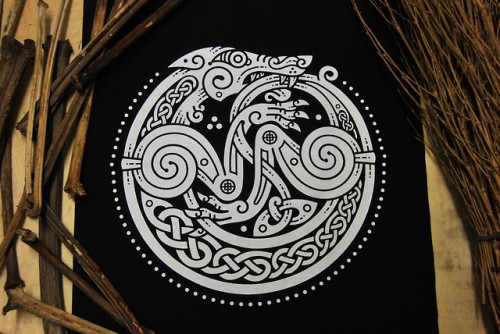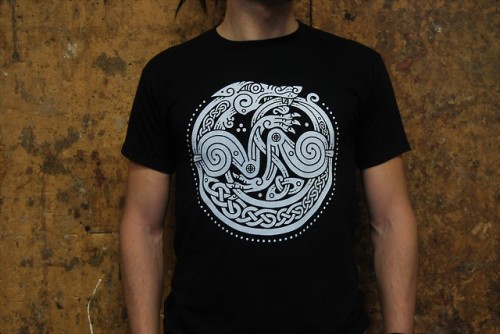#faoilleach
https://www.etsy.com/shop/limbsdisarm
New print in collaboration with @celticartlogo, available as backpatch and t-shirt in a variety of colours. Follow us oninstagram for more updates!
We ship worldwide!
As one of the most puzzling and misinterpreted creature, the wolf has been at the very centre of cults and mythologies throughout history. In ancient times, Roman era, and Greek mythology, to the late Norse age and its depiction of the infamous Fenrir, the wolf has been a key figures in many cultures. Even if it’s not often associated with it, it played a pivotal role in Celtic culture as well. The wolf is not as present as other animals or zoomorphic representations in Celtic art, not like the boar, the eagle or the deer. Even so, there are mentions of the wolf in Celtic lore, particularly the very late one from the Middle-Age. Soon after Cormac mac Airt, the future High King of Ireland, was born, he was carried off and raised by a she-wolf for a period of time in the caves of Kesh, alongside her other cubs. In the tale of Táin Bó Cúailnge, the goddess Mórrígan appears under different shapes to the legendary hero Cú Chulainn, one of these being the shape of a wolf. Interestingly, the wolf plays a key role in the Celtic year cycle as well. It has always been associated with the first part of the year, usually the time around January, in different areas of Scotland and Ireland. Still today, in the Gaelic-speaking Highlands and islands, people refer to the first month of the year as “Faoilleach”, originally associated to a whole period in the Scottish agricultural calendar. The name has a close link to the wolf figure: in fact, “faol” or “faol-chú” means wolf in Gaelic, and it would appear to be a very old term, as wolves have been extinct in Scotland for centuries. In Scotland, the most notable representations of wolves are to be found in the Pictish culture, such as the one majestically engraved on the Ardross stone, 30 miles north of Inverness. This print is a modern reinterpretation of one of the most significant animals celebrated in hundreds of years of lore, legends and stone carvings.
Post link




